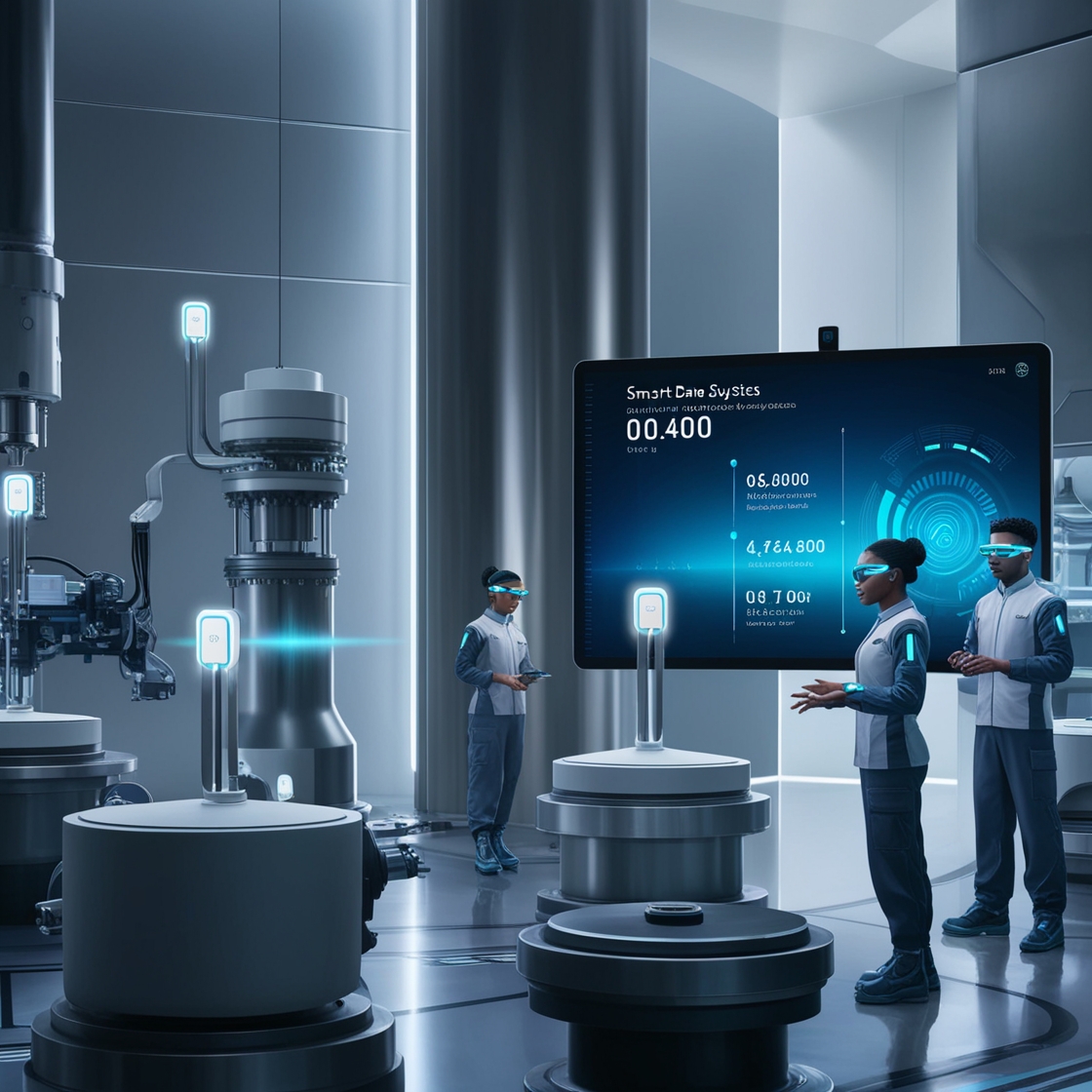Introduction
In the era of rapid technological advancements, Industrial IoT (IIoT) is emerging as a game changer in the manufacturing sector. Imagine a factory floor where machines communicate seamlessly, adjusting operations in real-time based on data collected from smart sensors. That’s not science fiction; it’s the reality of IIoT. This article delves into how Industrial IoT, driven by smart sensors and automation, is revolutionizing manufacturing.
Understanding the Basics of IoT
Before we dive deeper, let’s clarify what IoT really is. The Internet of Things (IoT) refers to a network of physical objects equipped with sensors, software, and other technologies to connect and exchange data over the internet. In contrast, Industrial IoT focuses specifically on industrial applications. It integrates smart sensors and devices into industrial settings, enhancing the operational capabilities of manufacturing processes.
Components of IoT Systems
At its core, an IoT system consists of:
- Sensors: Gather data from the environment.
- Connectivity: Transmit data to a cloud or local server.
- Data Processing: Analyze the data for actionable insights.
- User Interface: Allows users to interact with the system.
Difference Between IoT and Industrial IoT
While both concepts involve interconnected devices, IIoT is tailored for industrial environments, focusing on improving operational efficiency, productivity, and safety in sectors like manufacturing, energy, and logistics.
The Role of Smart Sensors
What are Smart Sensors?
Smart sensors are devices capable of gathering, processing, and transmitting data. They can monitor various parameters like temperature, pressure, and humidity, providing manufacturers with invaluable insights.
How Smart Sensors Work
These sensors collect data and communicate it via the internet to centralized systems, allowing for real-time analysis. They often include built-in intelligence to interpret data locally, minimizing the need for constant cloud connectivity.
Types of Smart Sensors Used in Manufacturing
Manufacturers use various types of smart sensors, including:
- Temperature Sensors: Monitor heat levels in processes.
- Pressure Sensors: Ensure systems operate within safe limits.
- Proximity Sensors: Detect the presence of objects, aiding automation.
- Vibration Sensors: Monitor machine health for predictive maintenance.
Benefits of Smart Sensors in Manufacturing
Enhanced Efficiency and Productivity
By providing real-time data, smart sensors allow manufacturers to streamline operations, reducing downtime and enhancing productivity.
Real-Time Data Collection
Smart sensors enable continuous monitoring, offering insights that help in making quick decisions and adjustments in production lines.
Predictive Maintenance Capabilities
With predictive analytics, manufacturers can foresee potential machine failures before they occur, saving costs on emergency repairs and production interruptions.
Automation in Industrial IoT
What is Automation?
Automation involves using technology to perform tasks with minimal human intervention. In manufacturing, it encompasses everything from simple machines to complex robotics.
Types of Automation in Manufacturing
Automation in manufacturing can be categorized into:
- Fixed Automation: Used for high-volume production of identical products.
- Programmable Automation: Ideal for batch production, allowing for flexibility.
- Flexible Automation: Adapts to changing production needs and varies product types.
The Synergy Between Automation and IoT
Combining automation with IoT technologies leads to smarter manufacturing processes. Machines can not only operate autonomously but also communicate and coordinate with each other, creating a more integrated manufacturing environment.
Applications of Industrial IoT in Manufacturing
Supply Chain Optimization
IIoT enables manufacturers to track inventory in real-time, optimizing supply chain operations and reducing costs.
Quality Control and Assurance
With sensors constantly monitoring production, manufacturers can ensure product quality, detecting defects early in the process.
Energy Management
By monitoring energy consumption patterns, companies can reduce waste and implement more sustainable practices.
Challenges in Implementing Industrial IoT
Security Concerns
As more devices connect to the internet, the risk of cyber-attacks increases. Manufacturers must prioritize cybersecurity measures to protect sensitive data.
Integration with Legacy Systems
Many manufacturers operate with outdated equipment. Integrating IoT technologies with these legacy systems can pose significant challenges.
Cost Considerations
While the benefits of IIoT are substantial, the initial investment for smart sensors and infrastructure can be a barrier for some manufacturers.
Case Studies
Example 1: Company A’s Smart Factory Transformation
Company A implemented IIoT technologies, resulting in a 30% increase in productivity and a significant reduction in downtime through predictive maintenance.
Example 2: Company B’s Predictive Maintenance Success
By leveraging smart sensors, Company B reduced its maintenance costs by 25%, achieving a return on investment within the first year.
Future Trends in Industrial IoT
Advancements in AI and Machine Learning
The integration of AI will further enhance the capabilities of IIoT, enabling more sophisticated data analytics and predictive modeling.
The Rise of Edge Computing
Edge computing will allow data processing closer to the source, reducing latency and improving real-time decision-making.
Increased Focus on Sustainability
As manufacturers strive to reduce their environmental footprint, IIoT will play a crucial role in energy management and resource optimization.
Conclusion
Industrial IoT is indeed revolutionizing the manufacturing landscape. With smart sensors and automation, manufacturers can achieve unprecedented levels of efficiency and productivity. As we look to the future, the continued evolution of these technologies will shape the way we produce goods, emphasizing sustainability and innovation.
FAQs
What is the difference between IoT and IIoT?
IoT encompasses a broad range of applications for connected devices, while IIoT specifically focuses on industrial applications, enhancing processes in manufacturing and other sectors.
How do smart sensors improve manufacturing processes?
Smart sensors enhance manufacturing by providing real-time data, enabling predictive maintenance, and improving efficiency and productivity.
What are the security risks associated with Industrial IoT?
The primary security risks include cyber-attacks, data breaches, and the vulnerability of connected devices, necessitating robust cybersecurity measures.
Can small manufacturers benefit from Industrial IoT?
Yes, small manufacturers can leverage IIoT technologies to improve efficiency, reduce costs, and enhance competitiveness, even with limited resources.
What does the future hold for Industrial IoT?
The future of IIoT will likely see increased integration of AI, edge computing, and a greater focus on sustainable practices within manufacturing.
